Readtopia Adds Differentiated Math Lessons to 25+ Thematic Units
We are thrilled to announce integrated math lessons for dozens of Readtopia’s thematic units! With instruction across multiple subject areas, including math, Readtopia is the only special education reading curriculum that schools need to help learners reach new heights.
Read on to learn the benefits of Readtopia’s integrated math lessons and see lesson samples from the Readtopia curriculum.
What is Readtopia?
Readtopia is an online special education literacy curriculum for elementary, middle, and high school students with complex learning barriers.
Readtopia presents instruction in 30+ thematic units. Each thematic unit teaches standards-aligned comprehensive reading through an age-appropriate narrative, which connects learning across subject areas.
The thematic units consist of a leveled graphic novel and informational text, authentic literature, phonics, videos, and photos
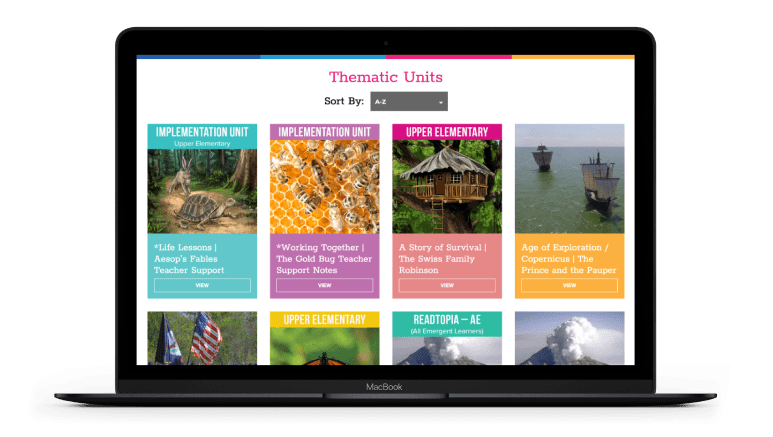
Why Does Readtopia Integrate Math?
We are adding math lessons to all of Readtopia’s thematic units to provide educators with a comprehensive literacy curriculum.
Almost every thematic unit now teaches early reading and phonics across English language arts, science, life skills, social studies, and math.
Ultimately, special education teachers can teach math using all of the age-appropriate thematic units.
What is the Content of Readtopia’s Math Lessons?
Readtopia’s math content aligns with college and career readiness standards. The math lessons are designed for students with complex needs, including students with autism taking the alternate assessment.
Readtopia has three types of math lessons:
- Video/Vocabulary: Teaches math words and their meanings.
- Hands-on Application: Applies math learnings to real-world scenarios.
- Independent Practice: Facilitates independent learning and practice.
Each math lesson has leveled instructional materials that connect basic mathematical concepts with the narrative of the thematic unit. That means educators can support a wide range of student abilities and backgrounds.
Readtopia’s math content covers eight domains, which are frequently included on standardized tests:
- Expressions and Equations
- Geometry
- Money
- Multiplication
- Division
- Number Sense
- Statistics and Probability
- Time
Example Math Lessons from Readtopia
Let’s explore examples of math lessons from the Readtopia thematic unit, Gravity, Force, and Motion, anchored by “The Tuskegee Airmen.” It tells the story of Henry, a young man who fights for his country during World War II and against segregation and prejudice.
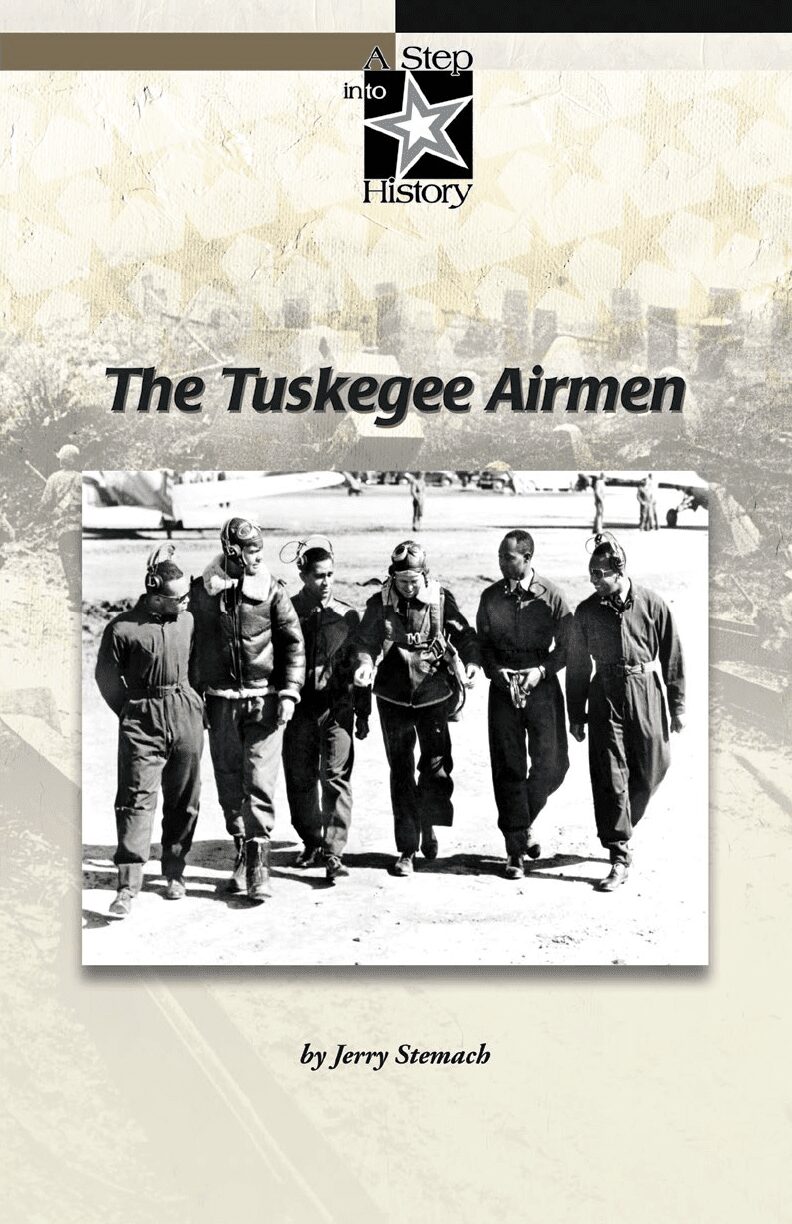
Hands-On Application Math Lesson
Lesson 7 of Gravity, Force, and Motion focuses on the math domain of money. Students learn how to define, identify, and count dollars and coins.
Part 1: Anchor
The first part of the lesson activates students’ background knowledge.
The teacher begins the lesson by playing a video about Henry’s childhood. The video describes Henry as a young boy who loved airplanes. The students learn that Henry enjoyed buying objects related to flying. The video also introduces students to the terms “dollar” and “coin.”
After the video, the teacher gives Henry’s shopping list to students.
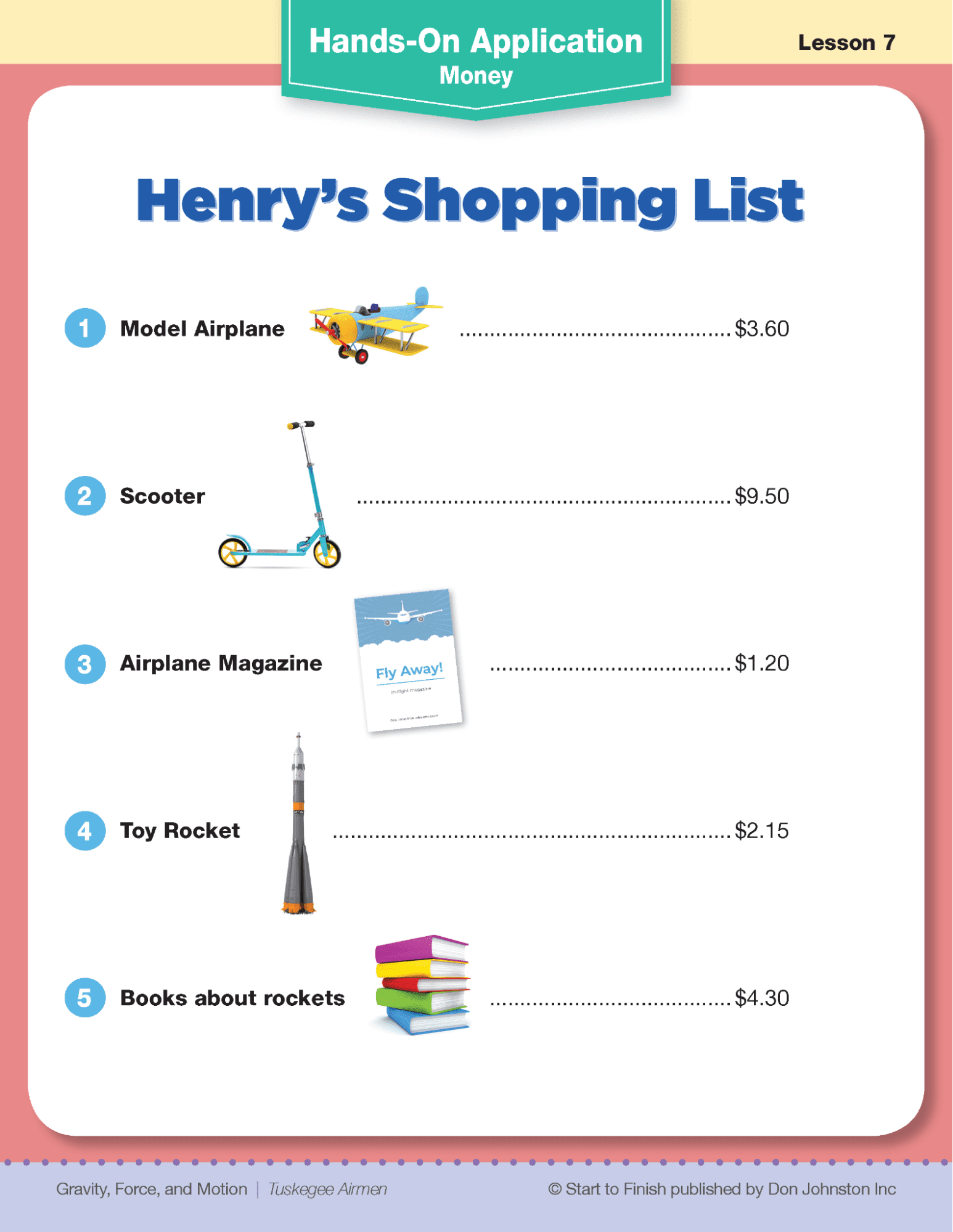
Part 2: Apply
Next, differentiated instruction takes place in four small groups. The teacher creates the student groups based on ability. Each group uses Henry’s shopping list, coins, and paper dollars to identify and count money:- Group 1 (M1): Names and identifies the types of coins, handing each to the teacher.
- Group 2 (M2–M3): Counts how much money the teacher gave them to purchase an item on Henry’s shopping list with paper money.
- Group 3 (M4): Uses the dollar-up method to pay for an item on Henry’s shopping list with paper money. Counts how much money the teacher gave them from various combinations of dollars and coins.
- Group 4 (M5–M6): Counts how much money the teacher gave them from three combinations of dollars and coins.
Part 3: Follow-Up
The teacher concludes the lesson by asking students to discuss the items they purchased from Henry’s shopping list and how much they cost. Then they remind students about the definitions and amounts of dollars and coins.
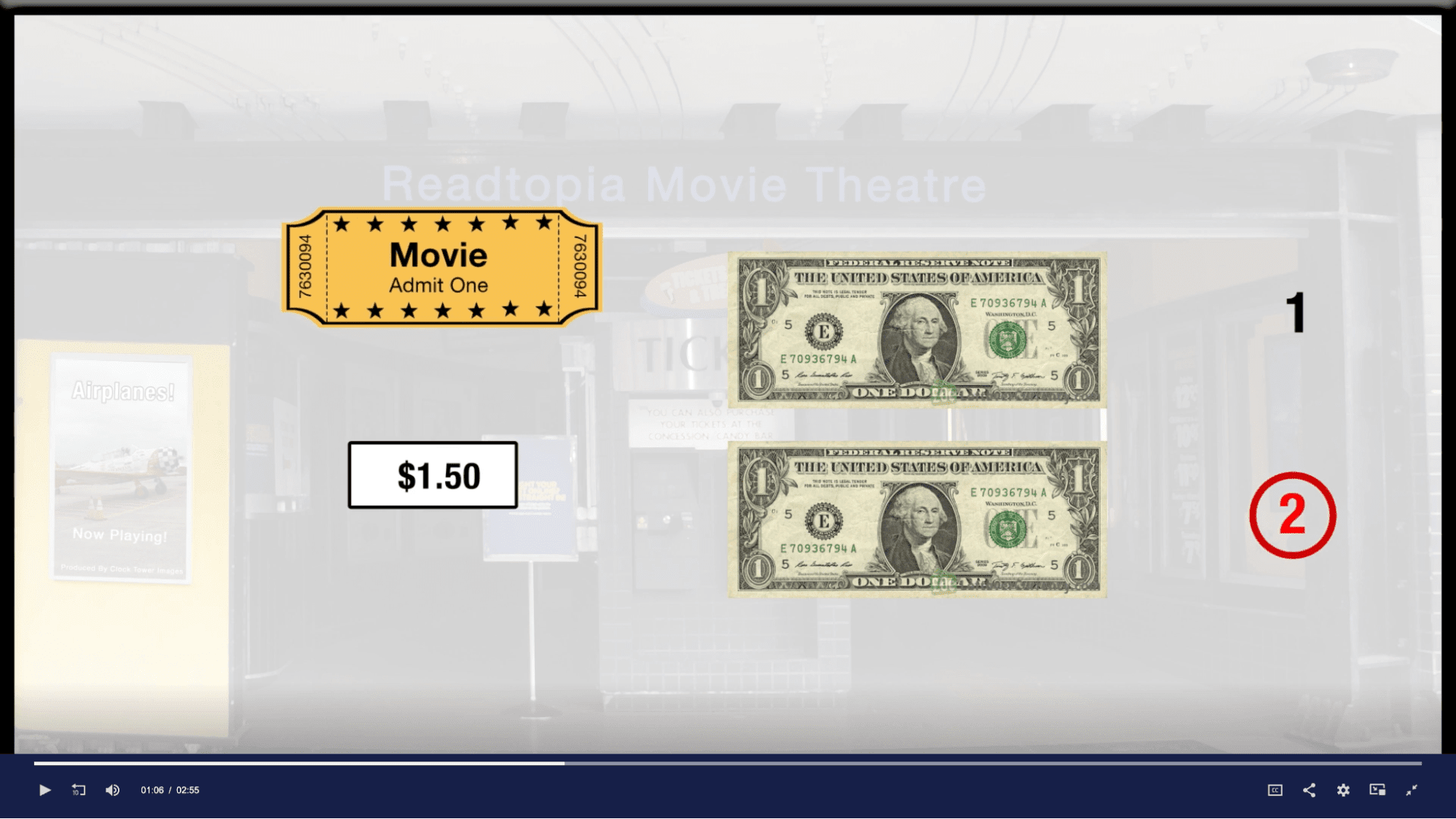
Video/Vocabulary Math Lesson
In Lesson 15 of Gravity, Force, and Motion, students learn math vocabulary words in the domains of statistics and probability.
First, the teacher plays a video introducing students to the words.
Next, the teacher defines the words using the provided flash cards.
Then, the teacher gives students the picture flash cards. The teacher says a vocabulary word aloud, and the students find the corresponding picture.
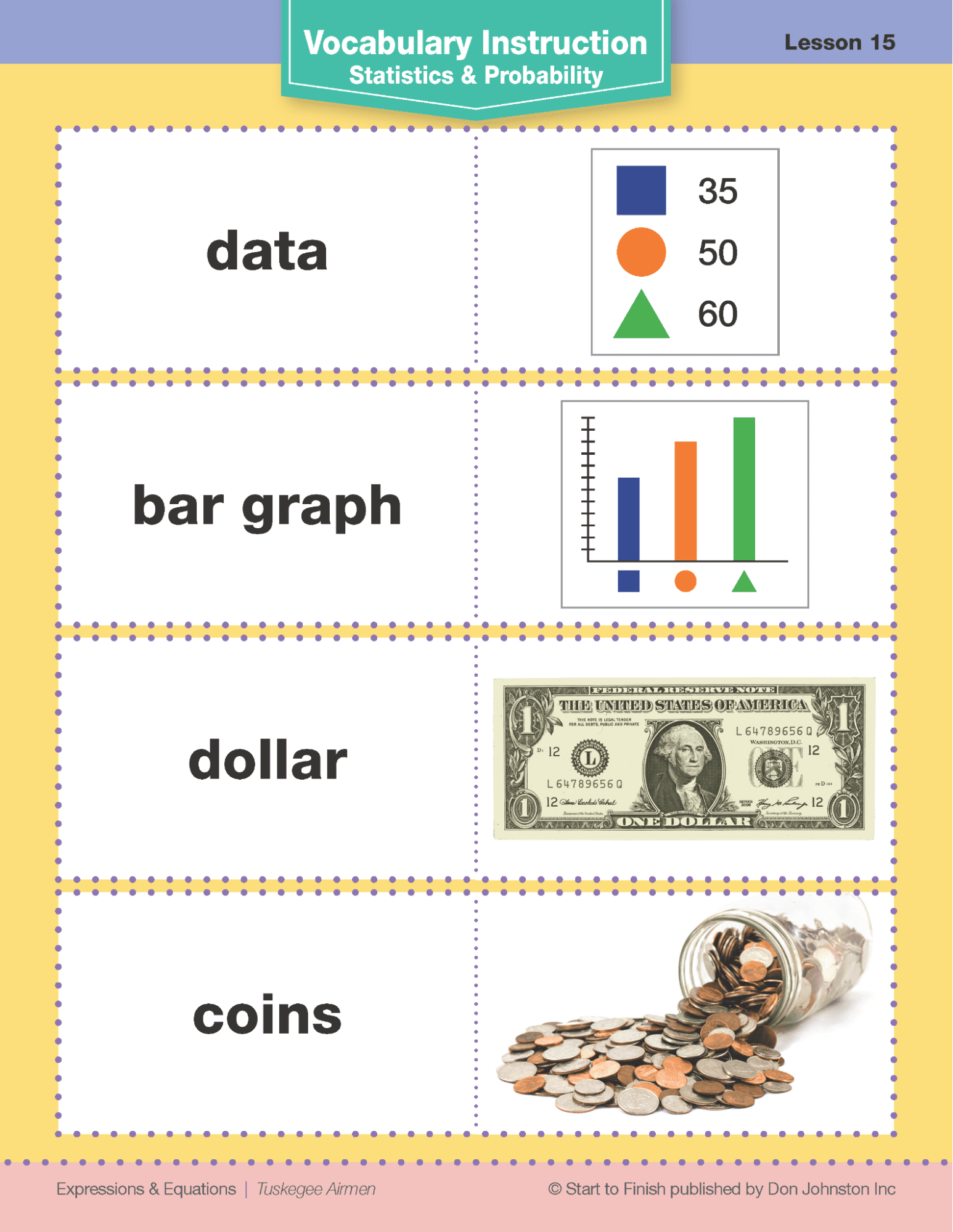
Independent Practice Math Lesson
Statistics and probability are the focus of Lesson 23 of Gravity, Force, and Motion. The math lesson has six levels of independent practice activities, each with a worksheet.
The leveled activities are:
- M1: Circling the airplanes.
- M2: Drawing a bar graph showing the number of airplanes and rockets.
- M3: Drawing a bar graph showing the number of airplanes and rockets, then circling which group has more.
- M4: Interpreting the bar graphs to determine the number of airlines and rockets, then circling which group has more.
- M5: Drawing a bar graph showing the number of airplanes and rockets.

Learn More About Readtopia
The Readtopia team is working on more thematic units highlighting living people from diverse backgrounds. Stay tuned for more details!
In the meantime, read about other recent additions to the Readtopia curriculum:
Try Readtopia Free
Readtopia educators already have access to these thematic units. If you are not yet part of the Readtopia family, try a samples of Readtopia for free on our companion website, My Learning Liftoff.

